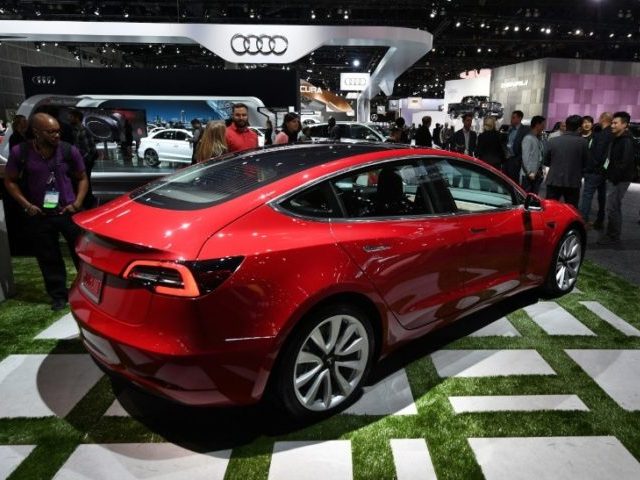Tesla was forced to deny a report by highly rated Silicon Valley tech analysts at Needham & Company that cancellations for its Model 3 sedan are outpacing new orders.
After the Needham “Sell” recommendation due to extended base Model 3 delivery times and expiring tax credits, Tesla CEO Elon Musk tweeted that Tesla received over 2,000 Model S and Model X luxury orders and 5,000 Model 3 orders last week.
Most Wall Street analyst agree that having lost money for 15 years, a third of its cash in refundable customer deposits, and on track to run out of cash by the end of the year, Tesla must achieve profitability and high delivery rates for its supposedly affordable $35,000 Model 3 all-electric sedan to avoid a year-end cash crisis.
The Model 3 that launched in April 2016 generated 325,000 pre-orders in its first month and had racked up 518,000 orders and $518 million in cash deposits a year later. But failing to deliver at the promised rate of 5,000 units per month, the Model 3 backlog fell back and was believed to have hovered since June 30, 2017, at about 455,000 units.
Bloomberg’s Model 3 Tracker estimates that Tesla has produced a total of 52,658 Model 3s and is currently at a run rate of 4,330 cars a week. Although Tesla does not disclose the number of Model 3 cancellations and new orders, an analysis by Second Source research estimated that Tesla through April made deliveries on 8 percent of customer orders and suffered 23 percent in cancellations, or about 115,000 orders.
Top auto industry teardown expert Munro & Associates reported in March that after a 6,000-man-hour study of two Model 3s built in mid-2017, the cars had the heaviest body weight and worst bill of materials cost in class. CEO Sandy Munro stated the quality was like a Kia from the 1990s and the base Model 3 was unprofitable with a production cost exceeding $36,000, before costs for marketing, warranty, and corporate overhead.
The combination of Munro’s report, Tesla failing to improve production rates, Wall Street Journal estimating $1 billion a quarter in negative cash flow, and Moody’s issuing a credit downgrade caused Tesla stock price to crash by 30 percent in March.
Breitbart reported on March 30 that CEO Elon Musk recalled half of all Model 3s produced and promised to sleep in the factory until the Tesla production got back on track. Despite threats by shareholders to dump Musk, he tweeted on July 1 that it was time to go back home at night after Tesla produced 7,000 Models 3 in 7 days and he promised Tesla would be profitable for the third quarter ending September 30.
Early this week, Munro & Associates followed up with a teardown of a newly built Model 3. CEO Sandy Munro reported that Tesla had made phenomenal improvements in design costs, battery costs, and electronics packaging. Although he still rated the fit and finish as poor, Munro shocked the auto industry claiming the $35,000 base Model 3 should have a 30 percent profit margin.
At a closing price of $320 a share on July 19, Tesla’s stock is about at the same price level when the Model 3 backlog peaked at about 518,000 orders 15 months ago. The average rating of the 20 Wall Street analysts that follow Tesla is a “Hold” and the average expected loss for the September quarter is $0.99 per share, according to Yahoo Finance.
But the range of Wall Street earnings estimates for Tesla is extremely wide, due to the unpredictability of Model 3 production and profitability. The most optimistic analyst expects a profit of $0.58 a share, and the most pessimistic analyst expects a loss of $2.49 a share.

COMMENTS
Please let us know if you're having issues with commenting.